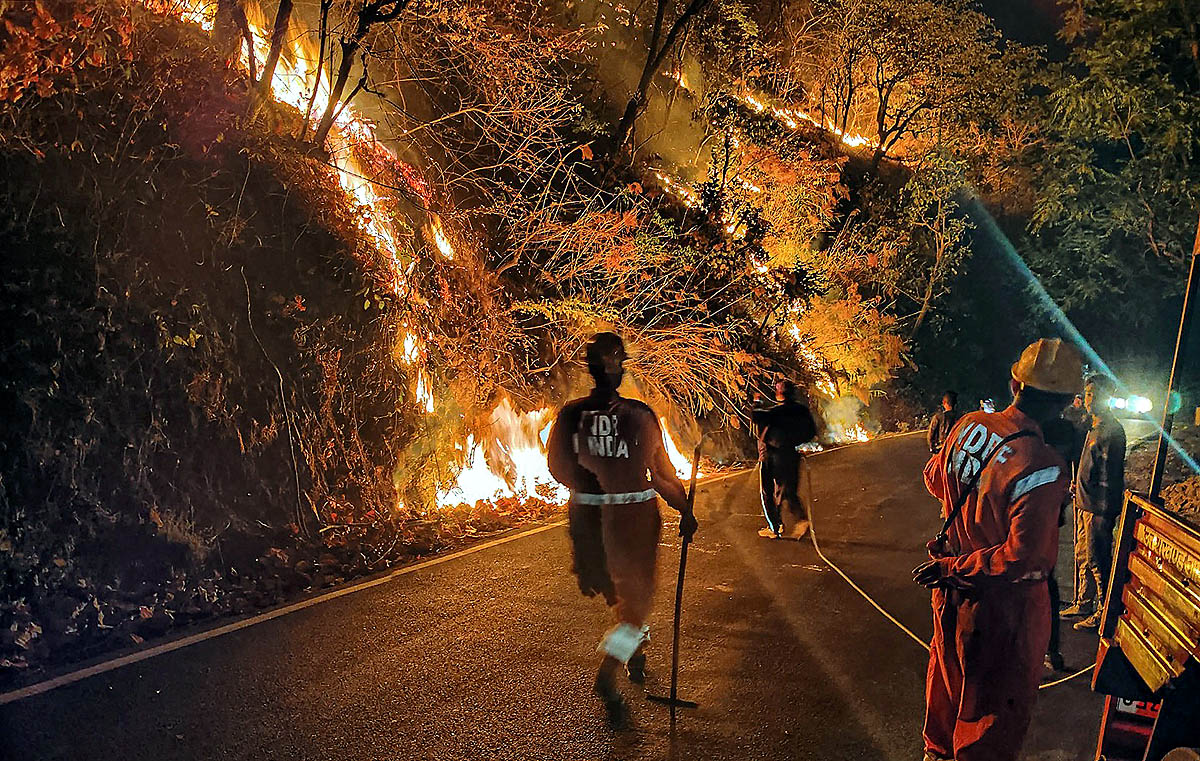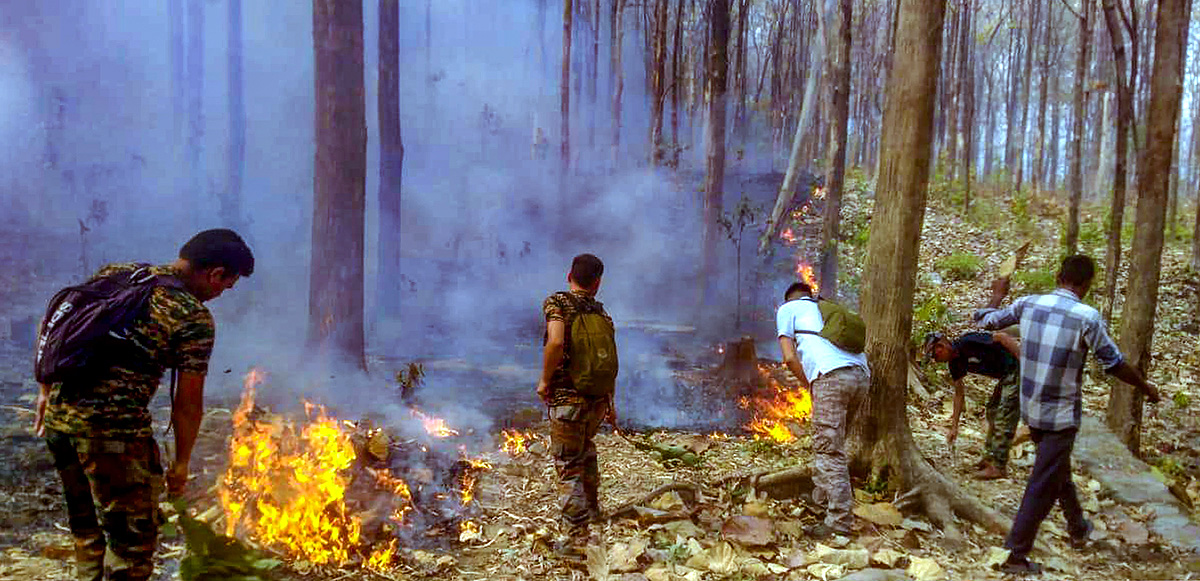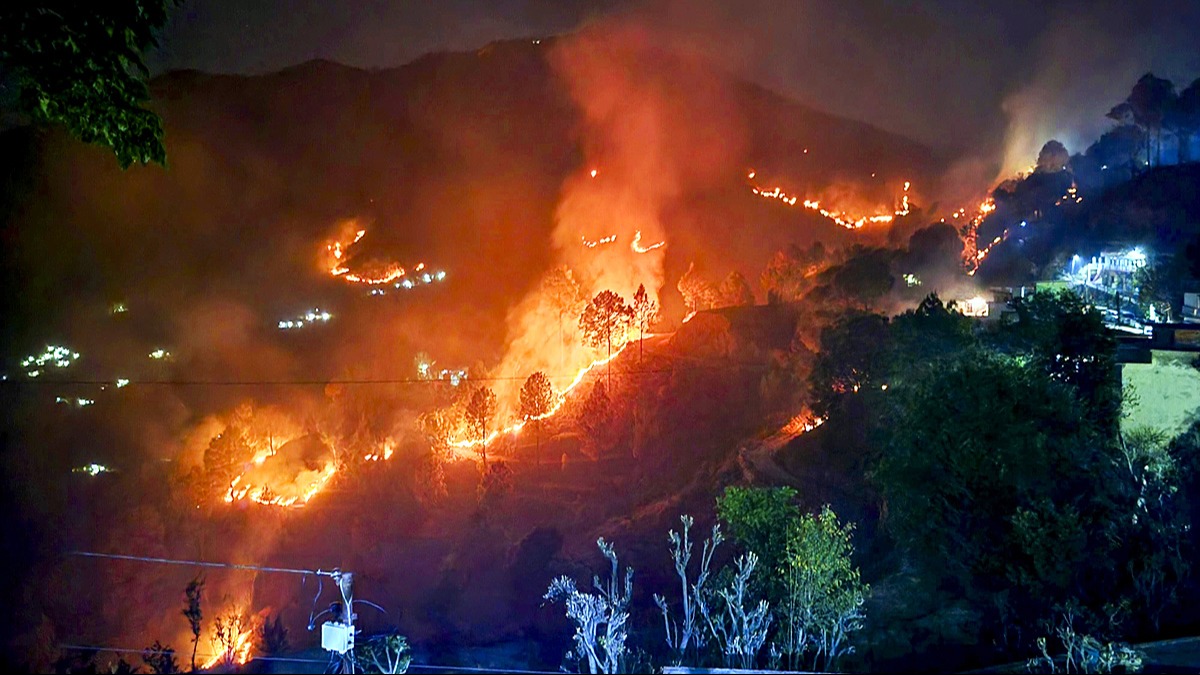The catastrophic wildfires scorching the verdant hills of Uttarakhand result from colonial greed, our ancestors, previous administrations, and our own missteps. Survival tactics necessitated adaptation to the region's climate conditions. After all, Charles Darwin's theory of survival of the fittest articulates every being's need for food and shelter, as well as safety from predators, and a territory rich in their prey.
Humans and other species have employed every possible strategy in the constant battle for dominance amongst settlers, invasive species, and survivors. The victors persevere while the remaining weaker entities dwindle or perish. The story of Uttarakhand's fire shares a similar theme.
There are several causes behind the raging wildfires on Uttarakhand's mountains. Highly flammable pine forests are particularly dangerous, covering 16% of the state's woodland area. For 300 years, these 'dangerously beautiful' pine trees have wreaked havoc on Uttarakhand.

Source: aajtak
Shocking Revelation from IIT Roorkee's Study
British colonists planted pine and cedar forests out of a desire for timber, leading to mixed forest vegetation that wasn't addressed by subsequent governments or our ancestors. Now, mistakes we've made contributing to global warming lead to these beautiful forests catching fire. Professors Piyush Srivastava and Anandu Prabhakaran from IIT Roorkee's Center of Excellence in Disaster Mitigation and Management have studied these fires.
What causes Uttarakhand's forest fires?
Professor Piyush explains that from 2013 to 2022, about 23,000 hectares of Uttarakhand's jungles burned down because of complex geographical conditions: mixed forests, inclines, and dry leaves and pine needles serving as fuel (known as Dry Fuel Condition), alongside climatic changes. Add human-induced or accidental fires to the mix for a fiery disaster.
Pine needles, locally called pirul, and resin become tinder as summers arrive. Pine forests produce resin in the warm season, a highly combustible substance that makes firefighting extremely challenging. Chief Minister Dhami recently announced a mission called 'Pirul Lao-Paise Pao' to mitigate forest fires. During his visit to Rudraprayag, he stated that pirul would be bought at ₹50/kg at collection centers run by the Pollution Control Board to reduce the fire risk.
Forest fires also have a season
Like any other season, wildfire season exists too. In India, it typically spans from November to June, with the highest number of fires occurring during February, March, April, and May. This season, a decrease in Western Disturbances—only 7 to 8 occurrences compared to the usual 15-20—resulted in less snowfall, a lack of rain, and dry forests, even in winter, leading to early fires in February.
The Dire Effects of Devastating Forest Fires
These grave fires will deteriorate air quality, infusing the atmosphere with more carbon particles, affecting areas far away and risking accelerated glacier melt—potentially leading to disasters like the Chamoli and Kedarnath incidents.
El Niño has increased heatwaves and temperatures, reminiscent of 2015-16 when 4,400 hectares of forests were engulfed. Subsequent landslides and flash floods post-fire pose a serious threat to the stability of mountainous topsoil, with runoff polluting rivers and degrading their water quality.

Source: aajtak
Who set this catastrophic fire ablaze?
Researchers are certain these fires are human-caused, be it accidental or deliberate. About 95% of all forest fires are eventually traced back to human activities: a carelessly discarded cigarette, burning debris. Because of global warming, even a small spark is now capable of reducing an entire forest to ashes.
How can such incidents be prevented?
Professor Piyush suggests cultivating awareness among locals on the mountain, instructing them not to make any mistakes that could cause a fire, especially during sensitive seasons, and not to burn waste or start fires on slopes—since only the local people can safeguard against such disasters.
Development of a Domestic Early Warning System
Professor Piyush and Anandu are developing a domestic early warning system that will predict forest fires based on up-to-date data about temperature, weather conditions, and geography. This advanced warning system will enable better preparedness in the future. ISRO-NASA's upcoming NISAR satellite could further enhance this capability.




